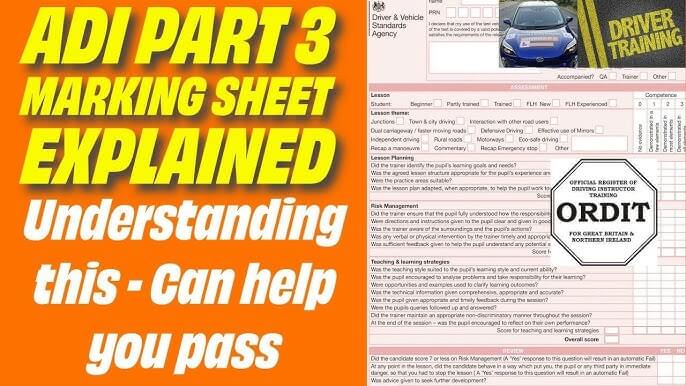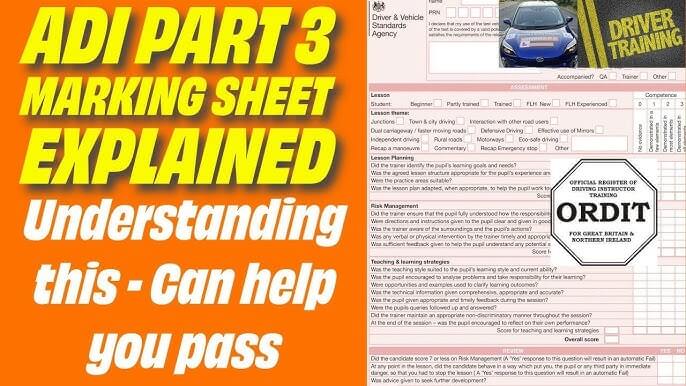
ADI Part 3 Meeting Traffic
Table of Contents
- 🚧 Meeting Traffic Is Really About SIX Core Skills
- adi part 3 meeting traffic
- 1️⃣ Knowledge – Do They Even Know What a Meeting Situation Is?
- 2️⃣ Understanding – Do They Get the Principles or Are They Just Guessing?
- 3️⃣ Planning Ahead – Spot the Situation Before It’s a Problem
- 4️⃣ Positioning & Speed – Are They Creating Space to Solve the Situation?
- 5️⃣ Judgement & Observation – It’s Gaps, Not Cars
- 6️⃣ Confidence – This Is Where It All Comes Together (or Falls Apart)
- 🎯 Final Thought: Meeting Traffic = Real Driving, Real Thinking
The Key Skills Behind ADI Part 3 Meeting Traffic — What You Really Need to Teach
adi part 3 meeting traffic
Because meeting traffic isn’t just about who goes first — it’s about who knows how to think ahead.
adi part 3 meeting traffic
Hey driving instructors and ADI Part 3 warriors —
Let’s talk about one of those everyday skills that causes way more stress (and test fails) than it should: meeting traffic.
It seems simple, right?
See a car coming. Work out who’s going. Carry on.
But if you’re not coaching the six essential skills behind it — you’re setting your pupil up to stall (or worse) when it really counts.
🚧 Meeting Traffic Is Really About SIX Core Skills
And if even one of these is missing?
That’s where the panic sets in. That’s where the misjudgement happens. That’s where you step in — or the test falls apart.
adi part 3 meeting traffic

1️⃣ Knowledge – Do They Even Know What a Meeting Situation Is?
This is step one. Forget MSPSL or clutch control for a sec — if they can’t recognise the situation, they won’t react to it.
Ask yourself:
Do they understand that a narrow road with parked cars can become a meeting situation?
Do they know that bins, skips, or delivery vans can cause sudden obstruction?
Do they know the difference between a clear lane and a narrowing hazard?
🧠 If they don’t have the language or labels, they can’t categorise the risk — and that delays decision-making.
2️⃣ Understanding – Do They Get the Principles or Are They Just Guessing?
We’ve all heard it:
🗣️ “The obstruction’s on their side, so I’ve got right of way!”
Yikes. It’s a principle — not a rule.
They need to know:
Sometimes giving way keeps things safer, not just “fair”
It’s about communication and space, not just taking turns
A large vehicle or a nervous driver might require extra patience
✅ You’re teaching road relationships — not just textbook routines.
3️⃣ Planning Ahead – Spot the Situation Before It’s a Problem
This is where things get real.
Ask yourself:
Are they noticing when the road narrows before they get there?
Are they scanning far enough ahead to spot oncoming vehicles early?
Do they realise that a skip, roadworks, or a bin day bottleneck = potential trouble?
👉 If not — you’ve got a planning gap, and it’s time to coach some real forward thinking.
4️⃣ Positioning & Speed – Are They Creating Space to Solve the Situation?
Here’s the magic formula:
📍 Reference point + sensible speed = safe decision.
Your pupil should be asking:
“Can I fit through here with a metre’s clearance?”
“Should I slow earlier and tuck in behind this parked car?”
“Can I edge forward safely and hold position to show I’m waiting?”
This is where visual reference points make all the difference.
Because “I feel like it’s fine” isn’t a strategy.
5️⃣ Judgement & Observation – It’s Gaps, Not Cars
Let’s get this clear: ✅ It’s not “Is there a car coming?”
✅ It’s “Is there a usable gap between us?”
Your pupil should be:
Judging distance, speed, and intentions of other drivers
Watching how other cars respond to the same space
Reading the road like a timeline — not just a snapshot
And if their observations are off?
👀 You’ll see hesitation, over-confidence, or worst of all — the freeze.
6️⃣ Confidence – This Is Where It All Comes Together (or Falls Apart)
Some learners know the rules.
Some can even explain the scenario perfectly.
But when it comes to actually dealing with it…
🛑 They brake.
🛑 They panic.
🛑 They wait — even when they should go.
Why?
Because they don’t trust their judgement or positioning yet.
That’s where you step in with:
Reassurance
Small wins
Practice in quiet environments
Real-time commentary to build internal dialogue
Confidence isn’t taught — it’s coached into existence.
🎯 Final Thought: Meeting Traffic = Real Driving, Real Thinking
This isn’t just about getting through a tight space.
It’s about helping your pupil: ✅ Think ahead
✅ Assess the risk
✅ Respond with calm control
And when you coach these six elements step-by-step —
You’re not just helping them pass.
You’re training the kind of driver we need on today’s roads.

.jpeg)
